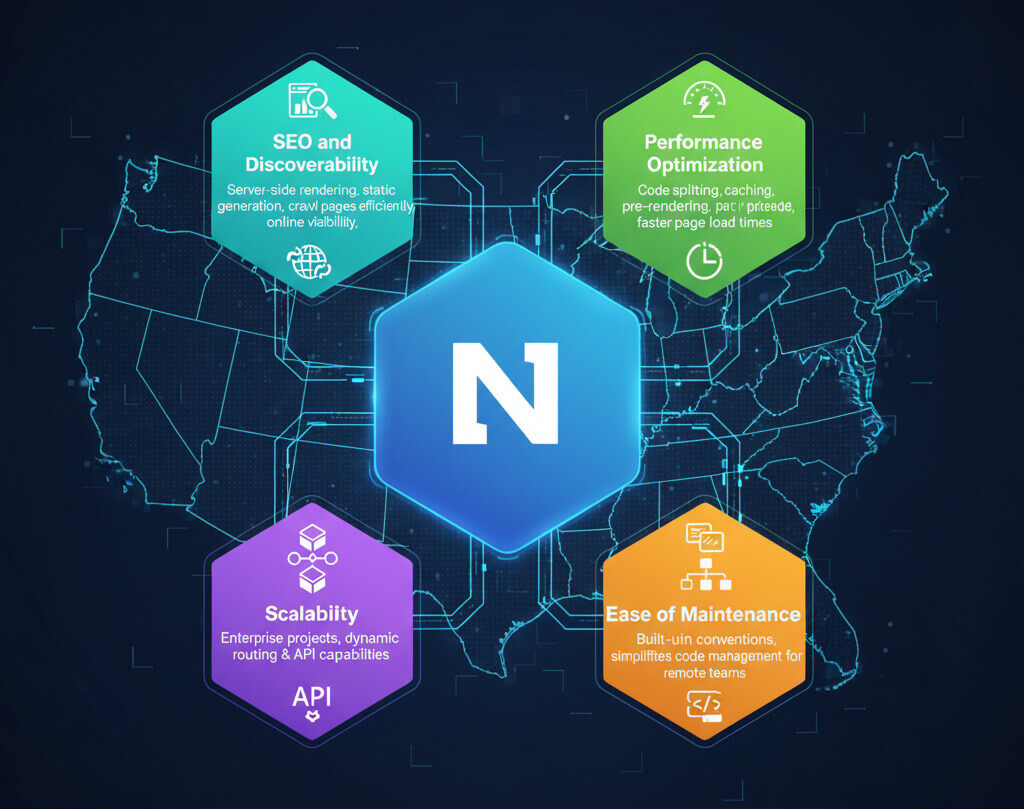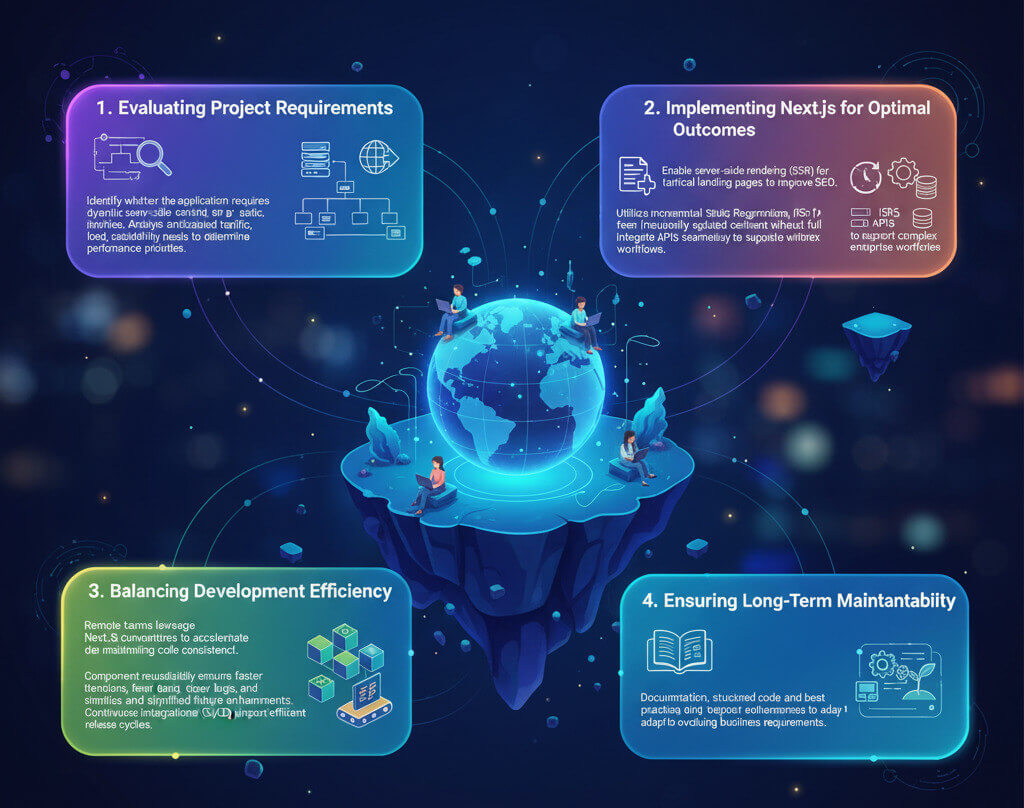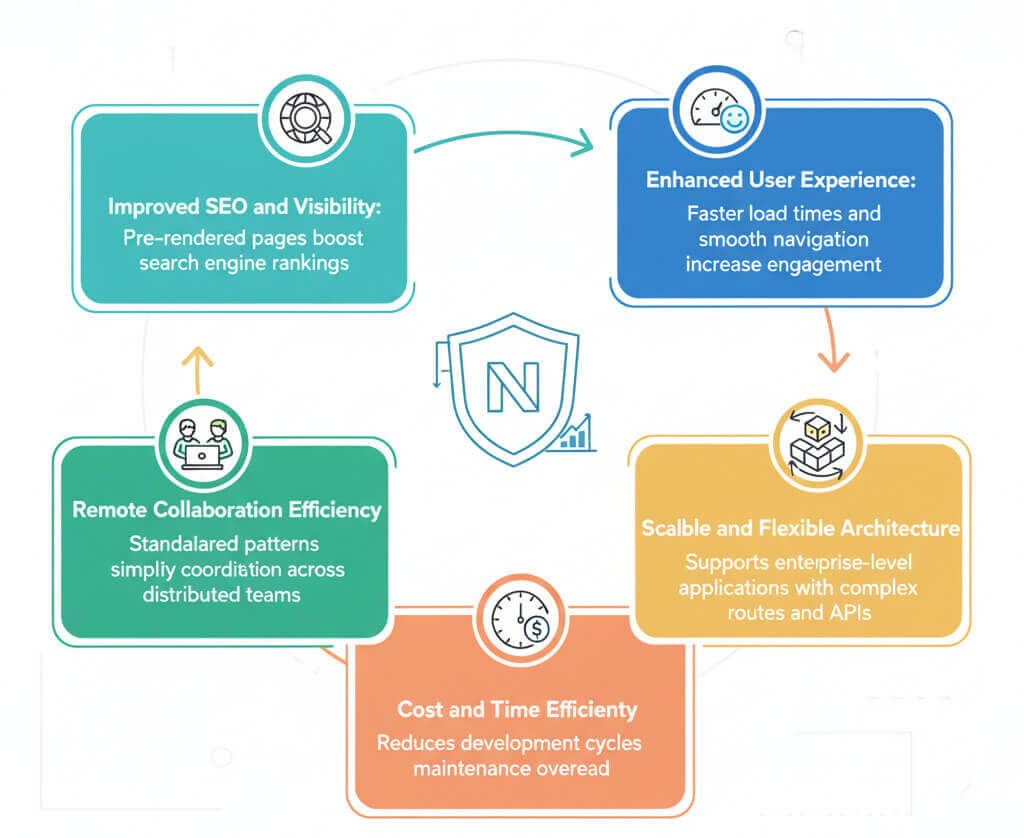
Loading
Copyright © 2025 CloudActive Labs (India) Pvt. Ltd | All rights reserved.

Loading
Copyright © 2025 CloudActive Labs (India) Pvt. Ltd | All rights reserved.

When to Choose Next.js Over React: A Remote Team's Advisory for U.S. Projects
In the fast-paced digital landscape of U.S. enterprises, choosing the right frontend framework can make or break a project’s success. While React remains a popular library for building dynamic user interfaces, Next.js offers additional capabilities such as server-side rendering, static site generation, and built-in routing, which can significantly enhance performance, SEO, and scalability.
CloudActive Labs guides U.S. digital business leaders on when to leverage Next.js over React through insights from experienced remote development teams.

When evaluating frameworks, businesses must consider project complexity, performance requirements, SEO needs, and deployment strategies:

Remote teams provide ongoing support and enhancements to adapt to evolving business requirements.

Conclusion
Selecting between React and Next.js depends on performance, SEO, and project complexity requirements. For U.S. businesses targeting high-performing, SEO-friendly, and scalable applications, Next.js often provides a clear advantage.
CloudActive Labs’ remote development teams guide enterprises in making informed technical decisions, ensuring that digital projects are optimized, maintainable, and future-ready.
Want expert guidance on choosing Next.js for your U.S. enterprise projects?
Partner with CloudActive Labs to leverage remote teams for scalable, high-performance, and SEO-optimized web applications.
Visit: www.cloudactivelabs.com Email: [email protected]









Have questions or need assistance? We're here to help! Reach out to us today, and our team will get back to you as soon as possible.